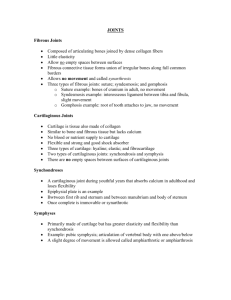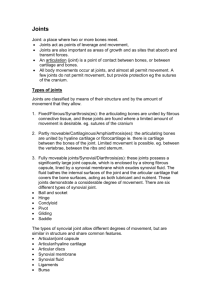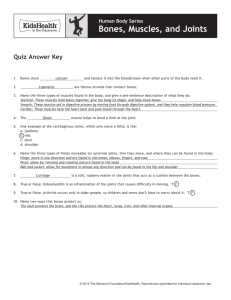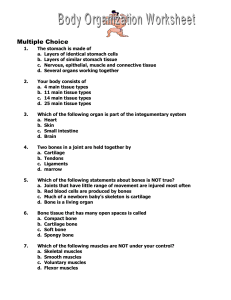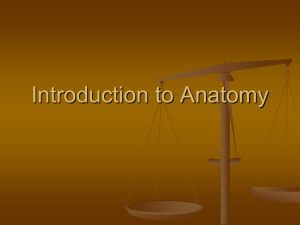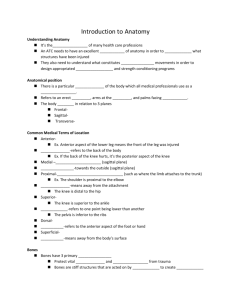4.1 Joints and Motion Study Guide by Hisrich
advertisement
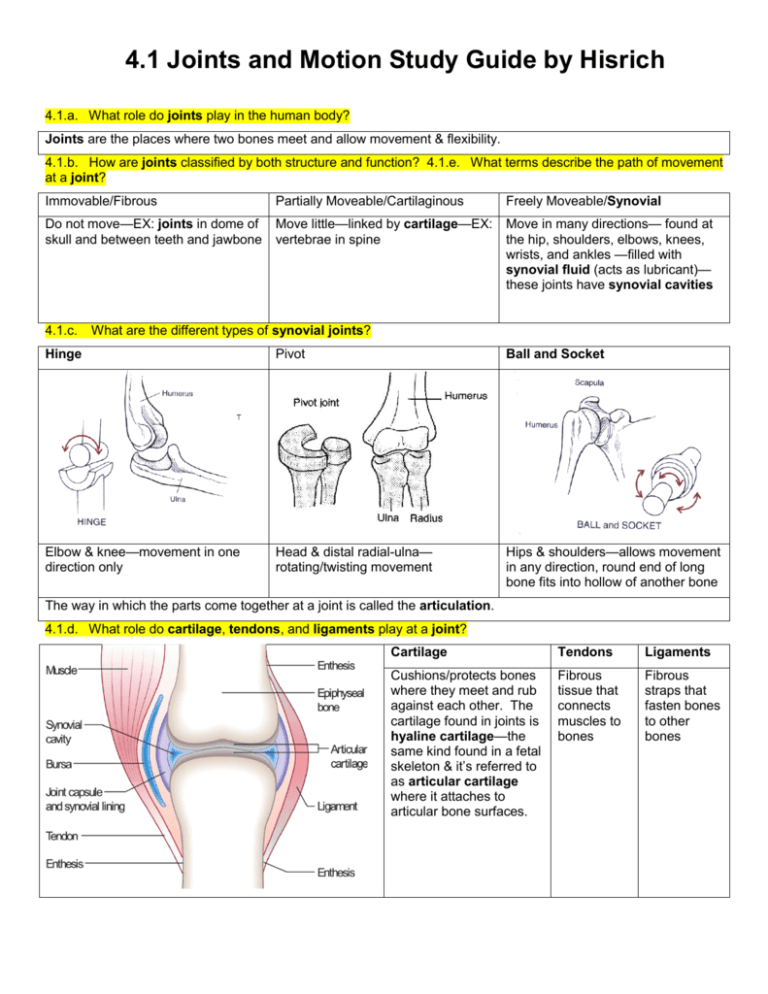
4.1 Joints and Motion Study Guide by Hisrich 4.1.a. What role do joints play in the human body? Joints are the places where two bones meet and allow movement & flexibility. 4.1.b. How are joints classified by both structure and function? 4.1.e. What terms describe the path of movement at a joint? Immovable/Fibrous Partially Moveable/Cartilaginous Freely Moveable/Synovial Do not move—EX: joints in dome of skull and between teeth and jawbone Move little—linked by cartilage—EX: vertebrae in spine Move in many directions— found at the hip, shoulders, elbows, knees, wrists, and ankles —filled with synovial fluid (acts as lubricant)— these joints have synovial cavities 4.1.c. What are the different types of synovial joints? Hinge Pivot Ball and Socket Elbow & knee—movement in one direction only Head & distal radial-ulna— rotating/twisting movement Hips & shoulders—allows movement in any direction, round end of long bone fits into hollow of another bone The way in which the parts come together at a joint is called the articulation. 4.1.d. What role do cartilage, tendons, and ligaments play at a joint? Cartilage Tendons Ligaments Cushions/protects bones where they meet and rub against each other. The cartilage found in joints is hyaline cartilage—the same kind found in a fetal skeleton & it’s referred to as articular cartilage where it attaches to articular bone surfaces. Fibrous tissue that connects muscles to bones Fibrous straps that fasten bones to other bones 4.1.f. What is range of motion? Range of motion is the range through which a joint can be moved & can be measured using a goniometer to determine angles. 4.1.g. How do you measure the range of motion of a particular joint movement? Abduction Adduction Circumduction Rotation Movement away from body’s midline Movement toward body’s midline Movement at synovial joint in which distal end moves in circle and proximal end remains in one place Moving bone around its own axis Extension Flexion Plantar Flexion Dorsiflexion Unbending movement around limb joint that increases angle between bones of limb at joint Bending movement around joint in limb that decreases angle between bones of limb at joint Bending foot down (pointing toe) Bending foot up 4.1.h. How do bones, muscles and joints work together to enable movement and locomotion for the human body? Our bones provide support and give our bodies shape, but cannot move on their own. The muscles provide the movement. The joints help attach bones to one another to provide flexibility & allow the muscles to help give the bones a way to move.


